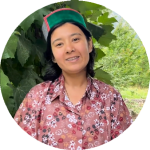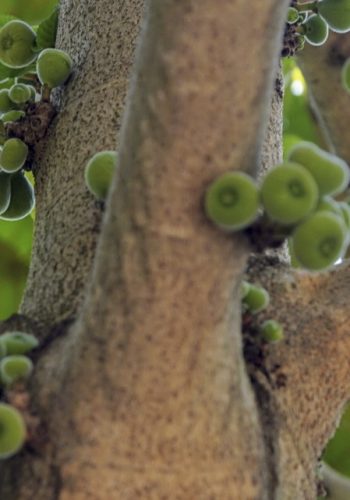
‘Re- Nyoza- Chilgoza’- The wonder tree of Kinnaur that is also a cultural emblem
Storyteller : Pramiti Negi, Himal Prakriti Fellow
Rekong Peo, Kinnaur District, Himachal Pradesh
August 2023
Read this story in Hindi
The folk art of storytelling fascinates me and I especially love folktales from Kinnaur. I was introduced to them by myZangai (Maternal Grandmother) when I was nine or ten. The month of September was about to end. My mother had dropped me and my younger sister to Mapo (Zangai’s home). It was the season for harvesting Chilgoza (Pine nuts from Pinus gerardiana)
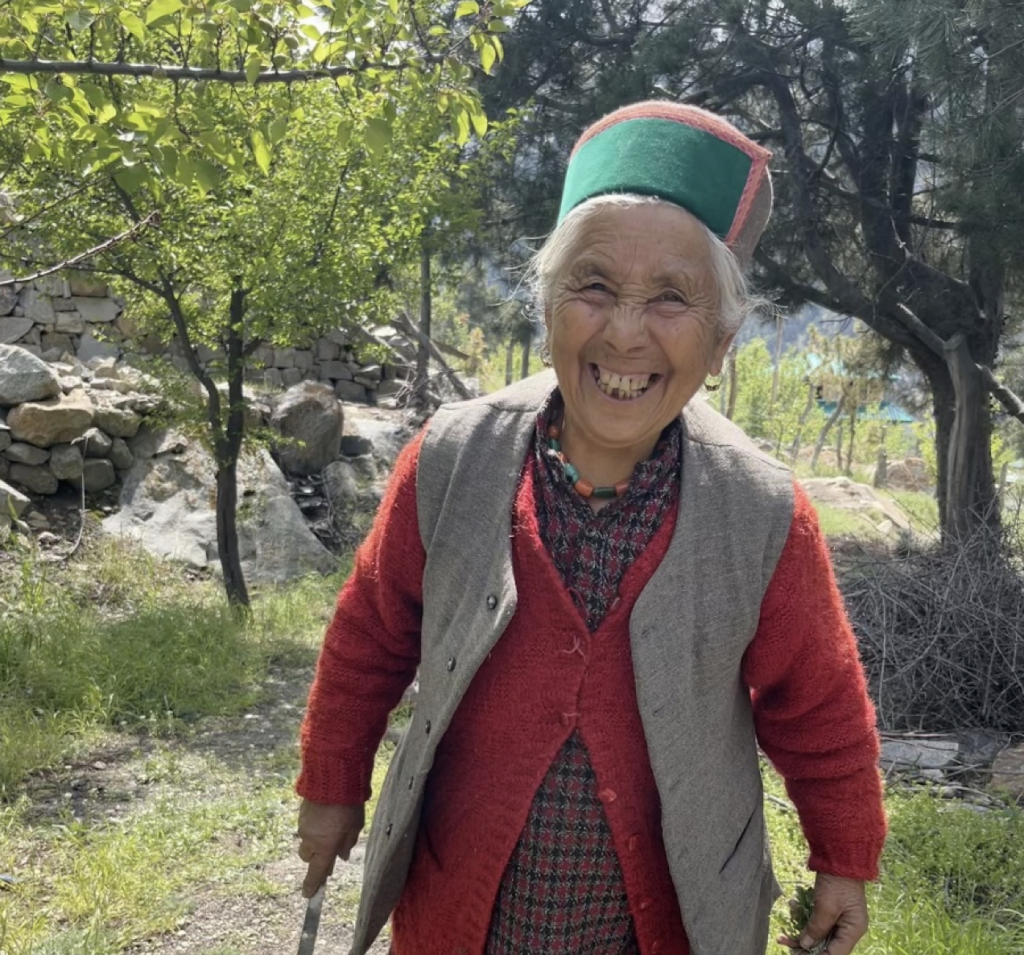
Everybody in the house sat on the rooftop and helped extract pine nuts from their cones. Cones lay everywhere. My Zang Teytey (Grandfather) would strike the cones with a small axe and crack them open into halves. He would strike once more and cut halves into quarters. My grandmother and the other women of the house would then extract pine nuts from the broken pieces. A huge pile of the emptied pieces of cones would sit on one side and a small pile of pine nuts would be set aside on the other. A tiny thief kept flapping, acrobating and hovering around the pile of nuts. It was my first encounter with such behaviour of Ritoch (Coal Tit). The bird would reach out for the pine nuts, and my sister and I would rush to quickly catch the thief, only to find nothing but air between our fingers.
The elders would warn us –
“Don’t run here and there, Chiti (the sticky resin from the pine cones) will stick on your clothes.”
Mind you, this Chiti is near impossible to remove from clothes with only soap and water.
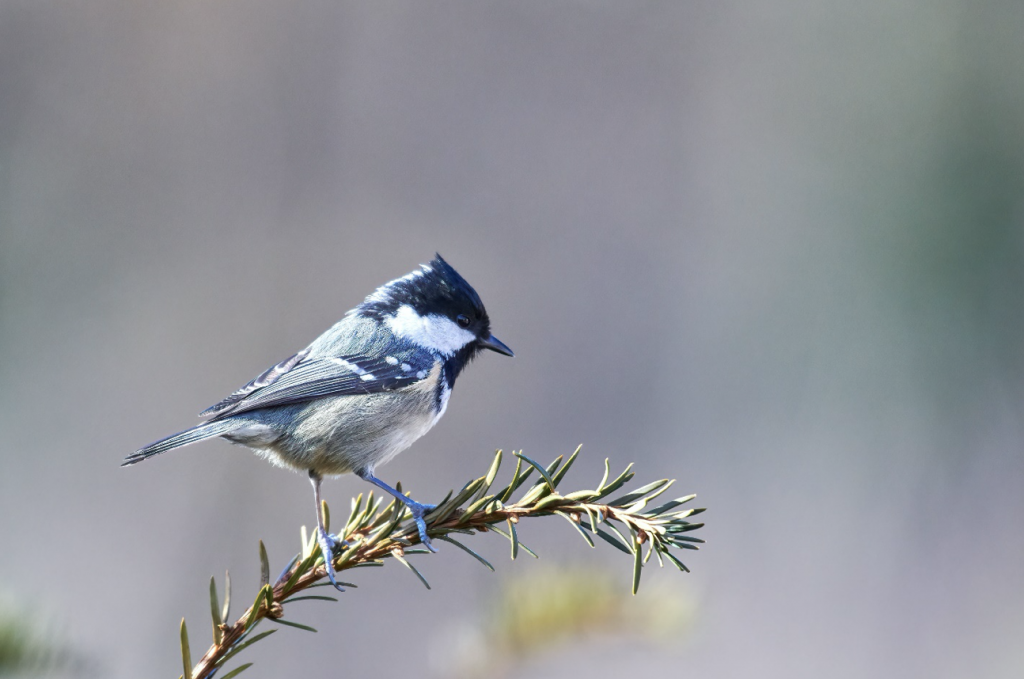
My younger grandmother then made a simple mechanism to trap the bird and calm us, kids, down. Yara (a huge sieve to clean coarse grains and Pine nuts) was supported to stand perpendicular to the ground with a wooden stick. The stick was then tied to a string. The moment the string was pulled, the sieve would fall to the ground. The hollow space underneath created a perfect space for the bird to be trapped.
And when the opportunity came, my younger grandmother pulled the string and with a thud, the afraid little bird was caught in the makeshift trap. The hint of pity was overpowered by the excitement of having a pet bird.
“Pet bird, pet bird” me and my sister synchronised.
Our younger grandmother rebuked us –
“Birds belong to the blue skies and the green jungles.” The order of things was restored the moment we lifted the sieve to see our new pet. The small bird beating its wings hurriedly flew away. Who knows what thoughts came into our heads at the time? But we soon forgot about the bird and started playing on our own.
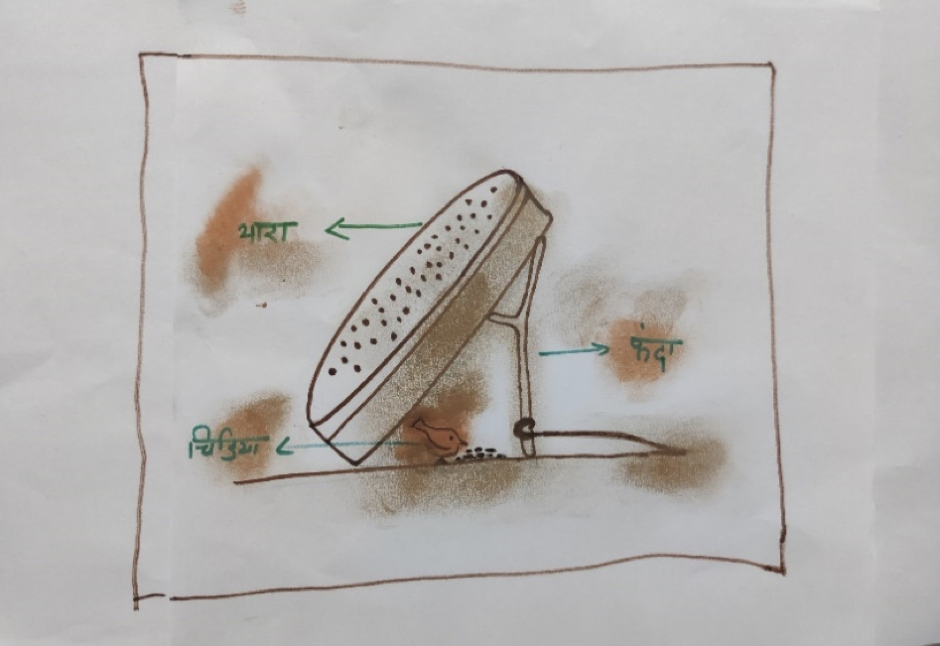
After a while us two little tired girls sat along Zangai.
“Want to hear a story?” said asked.
“Yes!” we excitedly jumped to the opportunity.
And soon she started narrating the most fascinating story of a mystical being that resided in the mountains of Kinnaur.
Her hands did not stop picking out the Chilgoza nuts, and every now and then she would smear some more rapeseed oil on her hands to keep the resin from sticking to her fingers.
The next day when our mother came to pick us up, my Zangai packed us a few pine nuts in a small cloth bag and said-
“Here is the Tenfa for the two of you.”
Tenfa is a Kinnauri word. A word that refers to the gifts given in the form of food products or medicinal plants. A word that perfectly embodies the love and sentiments associated with food and caregiving. Many years have passed since. But even today my Zangai ritualistically sends us a small amount of pine nuts as Tenfa. Whether the harvest is good or bad.
One day while strolling in a shopping complex in Chandigarh, I came across a kilo pack of Chilgoza nuts. I was baffled to see that the price of a kilo of chilgoza was seven thousand rupees. If you check prices on online websites you are most likely to find far more expensive products. However, the average income from pine nuts for the local people is close to ₹1000 per kg after deducting the labour cost.
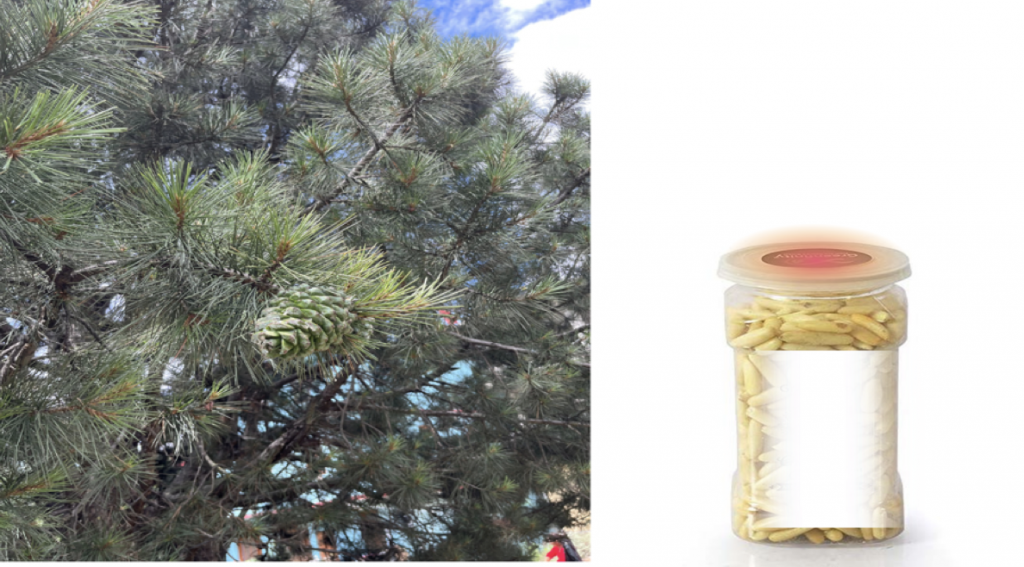
Harvesting the pine cones and removing the nuts from the cones is an extremely difficult and laborious process. This rare tree is found only in areas of Afghanistan, Pakistan, Kashmir and some regions of Kinnaur. Chilgoza trees grow at an altitude of 1800 meters to 2600 meters above sea level on steep and rocky mountain slopes. Chilgozas are harvested in the months of September and October. They can last the whole winter for an average family to sit and enjoy together.
To eat the pine nuts, they are first roasted on a hot griddle. Upon heating them at the right temperature and for the right amount of time, you will hear a few of them make a popping sound. That’s your cue to take them off the pan, peel the shells and enjoy the nutty, savoury taste.
In Kinnaur Chilgoza are mainly harvested from the forests. Chilgoza grown by people have a lower survival rate. Moreover, it takes many decades for pine trees to grow. Chilgoza is called Ri in our language. It is also known asNeoza.
Food and nutrition is an important part of a person’s survival but food has a story of its own. The story of Chilgoza is closely related to the story of Kinnaur. In earlier times, people from Kinnaur used to travel to the Lavi fair held in Rampur Bushahr to sell their Chilgoza. The Lavi fair has been formally organized by Rajas and the local authorities for more than three hundred years now.
Apart from it’s economic income, the Chilgoza also reflects the cultural and community values of Kinnaur. On festive occasions, such as weddings, garlands made of called Ri u or pine nuts are presented to the hosts.
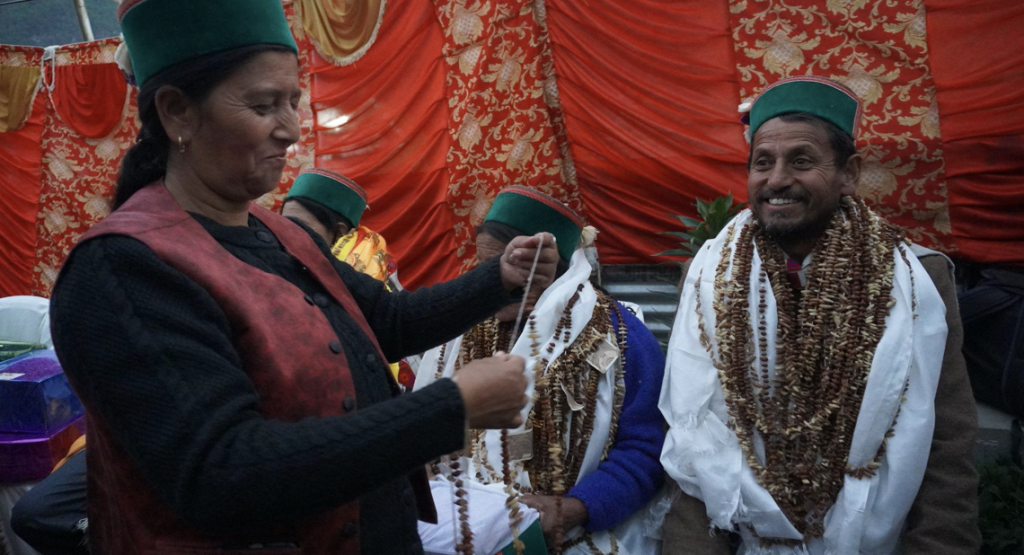
In the Jangram region, which consists of 5 villages including my Zangai’s, the people of the entire village go together to collect Chilgoza from the forests. One or two people from each house go to collect the nuts. The harvested pine cones are divided equally among all without any bias of age, sex or caste. And some of the pine cones are always left on the tree for the birds to feed on. Birds act as natural seed dispersers for Chilgoza trees.
But in recent times there have been changes in the harvesting techniques of pine nuts and along with many other reasons, this rare tree seems to be heading towards extinction. The practice of harvesting through contractors is rapidly increasing in Kinnaur. Excessive harvesting of pine cones, unskilled cutting techniques such as chopping down an entire branch to get inaccessible cones have been witnessed. Apart from this, increased activities related to hydroelectric projects have contributed to indiscriminate deforestation. The priceless Chilgoza trees are being chopped recklessly for activities such as the laying of transmission lines for Hydropower. Decreased and untimely snowfall, has also led to a fall in the production of Chilgoza. Increasing temperatures and people’s negligence have increased the incidents of forest fires.
When I talked with my people, different aspects related to the Chilgoza came to light, which I am adding here in the form of a small video.
Meet the storyteller



